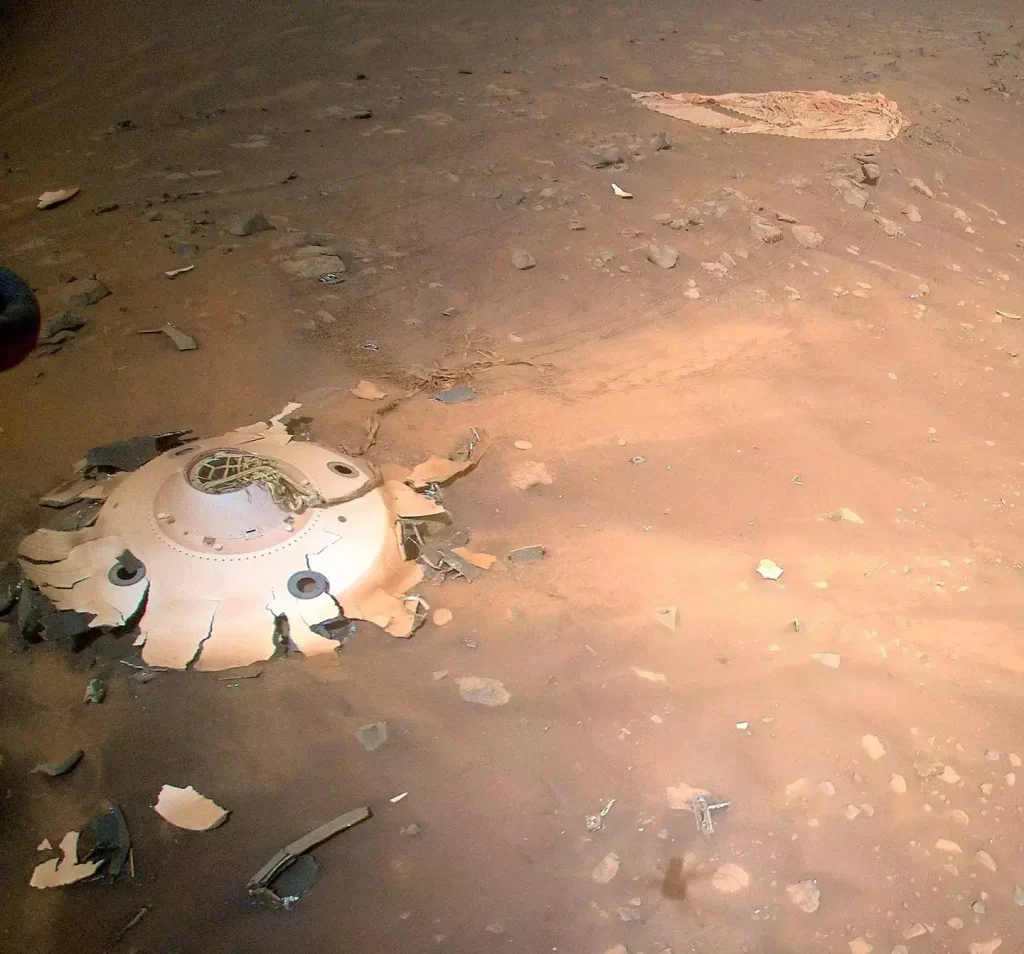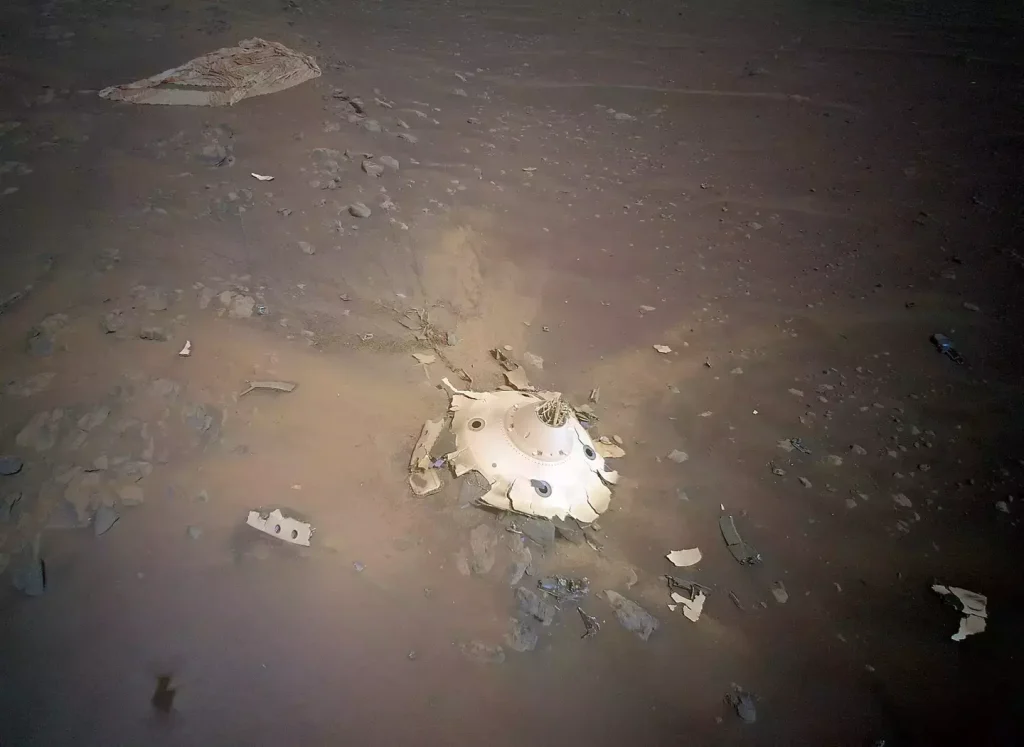NASA Helicopter Spots Mysterious Wreckage on Mars—A Glimpse of Human Presence on the Red Planet
During one of its many flights over Mars, NASA’s Ingenuity helicopter captured a haunting image: remnants of spacecraft debris scattered across the planet’s sandy, red surface. It was an “otherworldly” sight—quite literally—giving us a rare, almost surreal look at the impact of human technology on another world.

While the images of the wreckage may look straight out of a science fiction movie, they’re a testament to humanity’s growing reach into the cosmos. Only 121 years ago, we were just beginning to explore flight on Earth. Now, our technology is touching down on planets millions of miles away. One can only imagine where these advancements will lead by the end of the century.
Ingenuity, the small helicopter sent as part of NASA’s Mars 2020 mission, was initially designed to make just five flights alongside the Perseverance Rover. But far exceeding expectations, it has now completed an impressive 72 flights, marking the first controlled flight on another planet. Ingenuity was designed to explore areas of Mars that the Perseverance Rover couldn’t safely access, and in 2022, it photographed a striking scene: fragments of landing equipment scattered on Mars, dusted red by the Martian sand.
Ian Clark, a NASA engineer who worked on the Perseverance parachute system, remarked on the sight to The New York Times: “There’s definitely a sci-fi element to it. It exudes otherworldly, doesn’t it?” He added, “They say a picture’s worth a thousand words, but it’s also worth an infinite amount of engineering understanding.”
For anyone hoping this was evidence of alien life, however, the truth is less extraterrestrial. This wreckage is entirely human-made, part of the landing equipment that helped bring Ingenuity and Perseverance to the Martian surface. It’s a reminder that as we explore beyond Earth, we’re leaving traces behind, even on other planets.

In fact, Earth’s orbit itself is filled with remnants of our exploration. The Natural History Museum notes that around 2,000 active satellites orbit our planet, along with approximately 3,000 inactive ones drifting aimlessly. Add to this the countless pieces of smaller debris, and the area around Earth is a complex, congested belt of human-made objects, posing challenges to future space missions.
The question remains: will we eventually visit Mars and tidy up these remnants, or will they become a lasting marker of humanity’s first steps onto other worlds? Perhaps these relics will serve as historic monuments to our exploration of space—physical evidence of our desire to reach beyond our home planet and explore the mysteries of the universe.
Article Source: ladbible